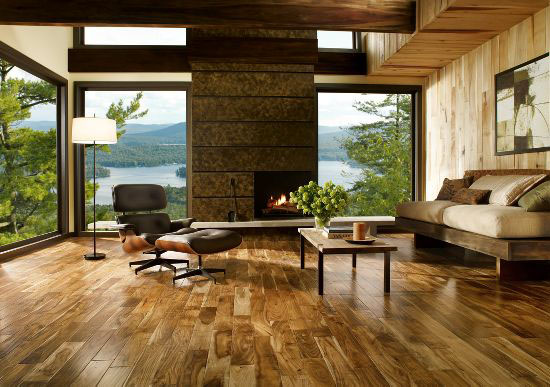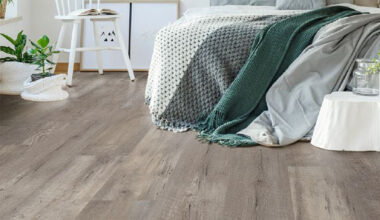Len Daubler, manager—product support for hard surfaces at Shaw Industries, explains the various Janka numbers for the same species of wood:
 A Janka Hardness test is part of ASTM D 1037 “Standard Test Methods for Evaluating Properties of Wood-Base Fiber and Particle Panel Materials.” Hardness is defined as “resistance to indentation using a modified Janka hardness test.” The test is a measurement of the load (force) required to embed a modified Janka ball, 0.444 inch in diameter, to one half its diameter into the wood specimen. Two areas on the face of a specimen that is 1 inch thick, 6 inches long and 3 inches wide are tested, and the information is recorded and then averaged.
A Janka Hardness test is part of ASTM D 1037 “Standard Test Methods for Evaluating Properties of Wood-Base Fiber and Particle Panel Materials.” Hardness is defined as “resistance to indentation using a modified Janka hardness test.” The test is a measurement of the load (force) required to embed a modified Janka ball, 0.444 inch in diameter, to one half its diameter into the wood specimen. Two areas on the face of a specimen that is 1 inch thick, 6 inches long and 3 inches wide are tested, and the information is recorded and then averaged.
So what does this mean, and why do these numbers vary? In simple terms, let’s refer to the Janka number for red oak, which according to the Wood Handbook is 1290. Let’s remember the number generated is an average of two test sites taken from one specimen, so in essence these numbers are a reference point to use and are not an absolute. Each time a specimen is tested, the numbers and average may be different.
Additionally, when looking at an engineered product’s Janka number, you have a number of variables that can affect that particular product’s hardness rating or psi, which involves the number of plies making up the overall thickness of the product and the construction of the material. Even the species of the underlying plies can contribute to a higher or lower Janka number. For example, say a three-ply red oak product’s top ply is red oak, the second ply is balsa wood and the bottom ply is red oak. Now consider a three-ply red oak product that is red oak throughout all plies. These two very different assemblies could produce rather starkly different Janka ratings. Long story short: We have to remember that a Janka number can vary, and no matter how high it is, all wood products can dent or scratch.
Reposted From Hardwood Flooring MagazineJanka Explained,

